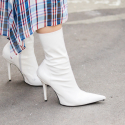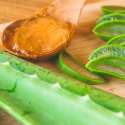- Europa
-
- Amstetten(7)
- Bad Schallerbach(1)
- Baden(4)
- Berg(1)
- Braunau am Inn(5)
- Bregenz(3)
- Bruck an der Mur(1)
- Graz(4)
- Hartberg(1)
- Innsbruck(5)
- Kemmelbach(1)
- Kitzbühel(4)
- Klagenfurt(5)
- Krems an der Donau(1)
- Kufstein(5)
- Leibnitz(1)
- Lienz(1)
- Liezen(1)
- Linz(5)
- Oetz(1)
- Punitz(1)
- Radstadt(1)
- Salzburg(5)
- St Polten(2)
- Steiermark(1)
- Steyr(1)
- Steyregg (1)
- Traun(3)
- Vienna(26)
- Villach(5)
- Völkermarkt(1)
- Wels(5)
- Wien(1)
- Wiener Neustadt(4)
-
- Aalst(1)
- Aarschot(2)
- Affligem(1)
- Anderlecht(5)
- Antwerp(11)
- Antwerpen(1)
- Arlon(6)
- Ath(2)
- Aubange(5)
- Bastogne (2)
- Blankenberge (1)
- Bruges(5)
- Brussels(15)
- Charleroi(5)
- Deinze(3)
- Dendermonde(1)
- Diest(2)
- Etterbeek(5)
- Geel(1)
- Genk(5)
- Gent(6)
- Geraardsbergen(1)
- Grimbergen (2)
- Hasselt(5)
- Heusden- Zolder(2)
- Ieper(1)
- Izegem(1)
- Knokke(4)
- Kortrijk(2)
- La Louviere(2)
- Leuven(5)
- Liege(4)
- Limburg(4)
- Lommel(1)
- Mortsel(1)
- Oostende(1)
- Turnhout(1)
-
- Chelyabinsk(1)
- Dubna(4)
- Gelendzhik(1)
- Irkutsk(1)
- Kaliningrad(1)
- Kazan(4)
- Krasnodar(3)
- Krasnoyarsk(1)
- Maykop(1)
- Moscow(50)
- Nizhny Novgorod(4)
- Novosibirsk(1)
- Omsk(1)
- Penza(1)
- Rostov-on-Don(2)
- Saint Petersburg(13)
- Samara(1)
- Saratov(1)
- Serpukhov (2)
- Sevastopol(3)
- Sochi(5)
- Stavropol(1)
- Surgut(1)
- Tyumen(2)
- Ufa(2)
- Vladivostok(3)
- Yekaterinburg (11)
-
- Alicante(8)
- Barcelona(113)
- Benalmadena(1)
- Benidorm(7)
- Castellón de la Plana(1)
- Denia(1)
- Estepona(1)
- Fuengirola (3)
- Ibiza(49)
- Jerez de la Frontera(1)
- Lanzarote(1)
- Las Palmas de Gran Canaria(5)
- Madrid(57)
- Malaga(9)
- Marbella(48)
- Murcia(1)
- Oviedo(1)
- Palma de Mallorca(48)
- Puerto Banus(3)
- Seville(1)
- Tarragona(1)
- Tenerife(7)
- Torrevieja(3)
- Valencia(9)
- Vigo(1)
- Zaragoza(1)
- Worldwide
Managing Frizzy Hair: Effective Tips and Techniques
 Frizzy hair can be a source of frustration for many individuals. It occurs when hair strands become dry and lose moisture, leading to an unruly appearance. Understanding the underlying factors contributing to frizz is essential for effective management.
Frizzy hair can be a source of frustration for many individuals. It occurs when hair strands become dry and lose moisture, leading to an unruly appearance. Understanding the underlying factors contributing to frizz is essential for effective management.Key Factors Behind Frizzy Hair
Humidity and Weather Conditions: High humidity levels can exacerbate frizz as moisture in the air causes hair to swell and lose its shape.
Damage and Breakage: Hair that is chemically treated, over-processed, or subjected to excessive heat can become weakened, resulting in frizz and split ends.
Lack of Moisture: Dry hair often craves hydration, and without it, the cuticle layer lifts, causing strands to become frizzy.
Effective Strategies for Frizz Control
Choose the Right Hair Products
Investing in quality hair care products designed specifically for frizz control is crucial. Look for shampoos and conditioners that emphasize hydration and smoothing properties. Ingredients like argan oil, shea butter, and coconut oil are particularly beneficial for nourishing and moisturizing hair.
Implement a Hydrating Routine
A consistent moisturizing routine can dramatically improve hair texture. Consider using deep conditioning treatments once a week to restore moisture levels. Leave-in conditioners can also provide ongoing hydration throughout the day.
Avoid Heat Damage
Excessive heat styling can lead to significant damage and increased frizz. When using heat tools, always apply a heat protectant spray beforehand. Additionally, opt for air drying whenever possible to minimize damage.
Styling Techniques to Tame Frizz
Embrace Natural Texture
Sometimes the best approach is to work with your hair's natural texture rather than against it. Consider styles that accentuate your curls or waves, using curl creams or gels to define and control frizz.
Use a Microfiber Towel
Traditional towels can cause friction, leading to more frizz. Switching to a microfiber towel can help absorb excess moisture while reducing frizz and keeping your hair smooth.
Opt for the Right Hairbrush
The type of hairbrush you use can make a significant difference. A wide-tooth comb is ideal for detangling wet hair, while a boar bristle brush can help distribute natural oils and reduce frizz in dry hair.
Lifestyle Changes for Healthier Hair
Maintain a Balanced Diet
A nutritious diet rich in vitamins and minerals can support healthy hair growth. Foods high in omega-3 fatty acids, biotin, and antioxidants promote hydration and strength, helping to combat frizz.
Stay Hydrated
Drinking plenty of water is essential for overall health, including hair health. Proper hydration helps maintain moisture levels in hair, reducing dryness and frizz.
Conclusion
Managing frizzy hair requires a combination of the right products, techniques, and lifestyle choices. By understanding the causes and implementing effective strategies, you can achieve smoother, more manageable hair. Embrace your natural beauty while keeping frizz at bay.









